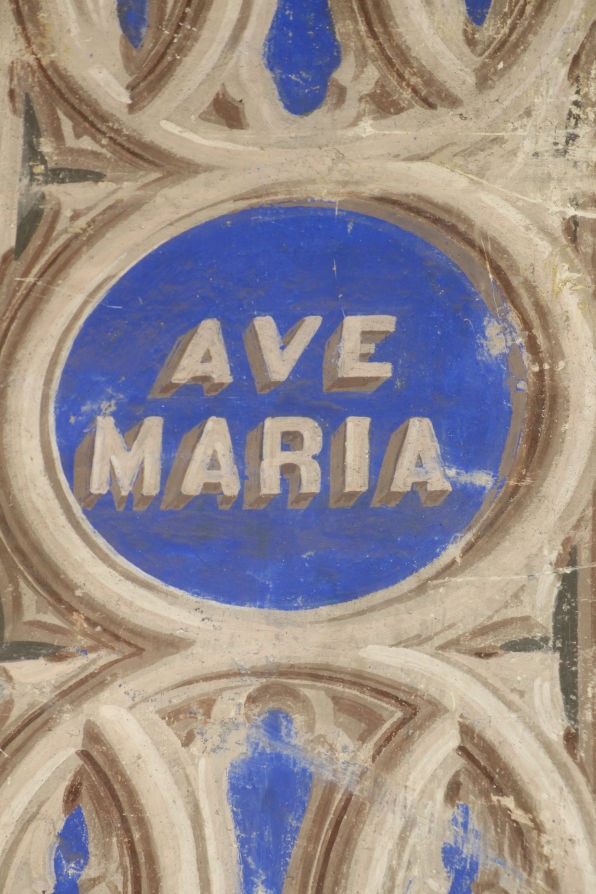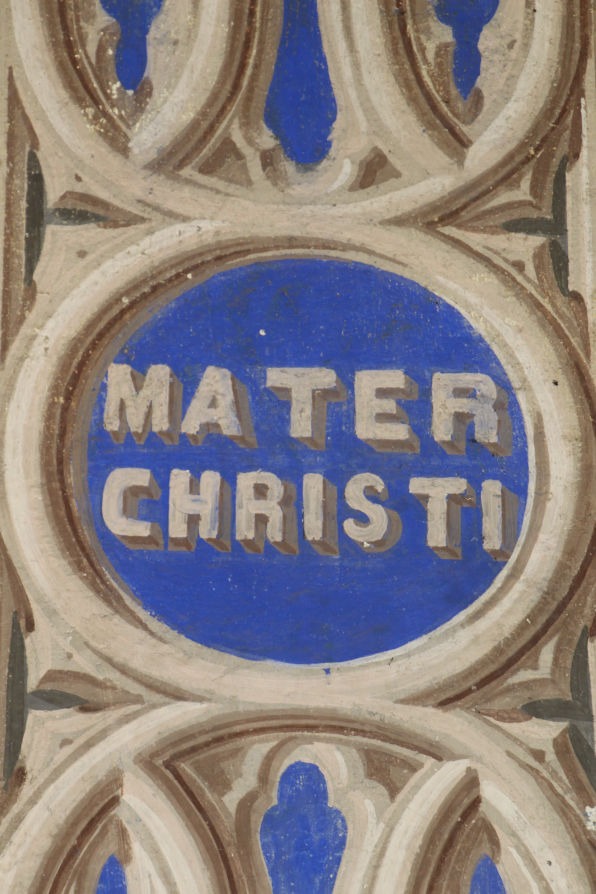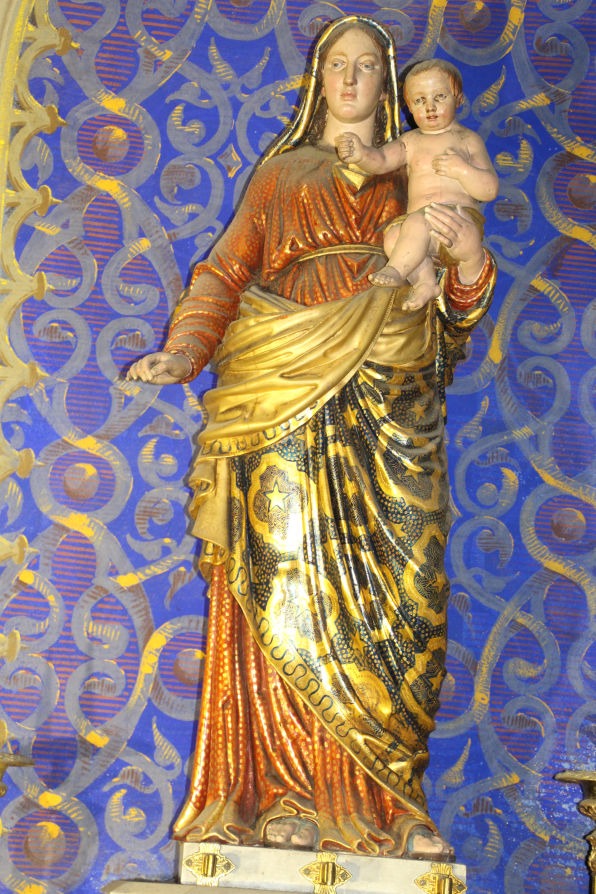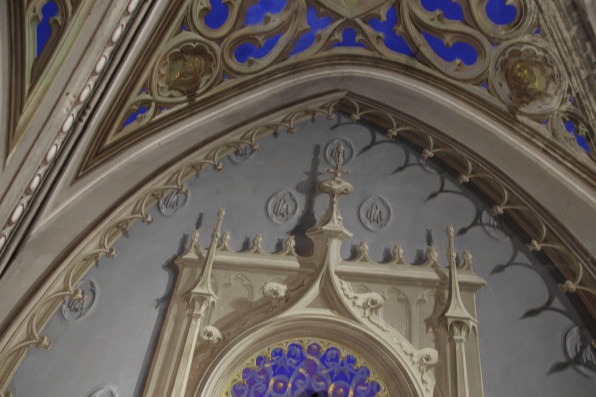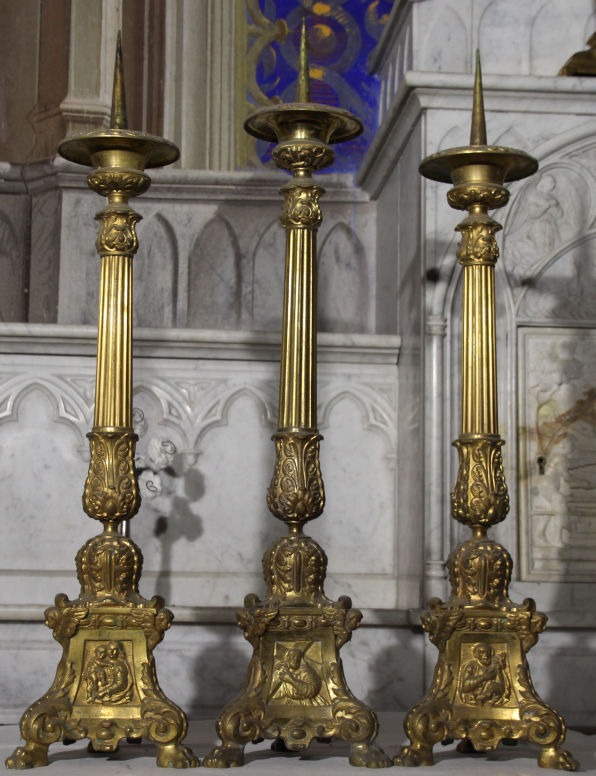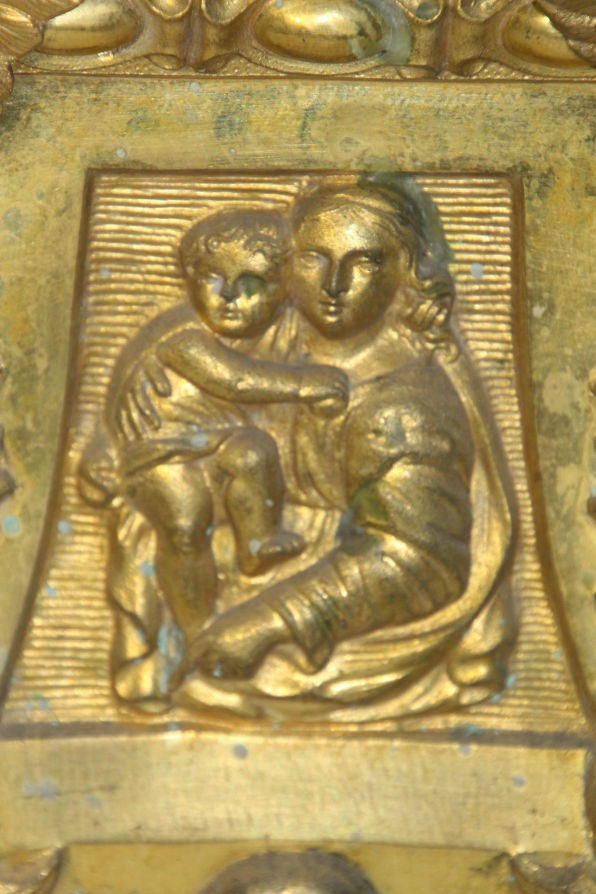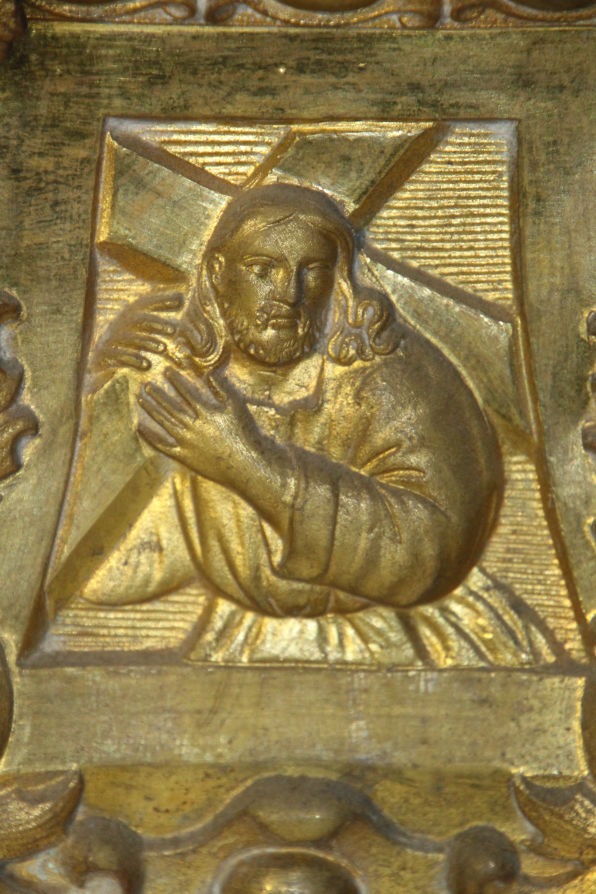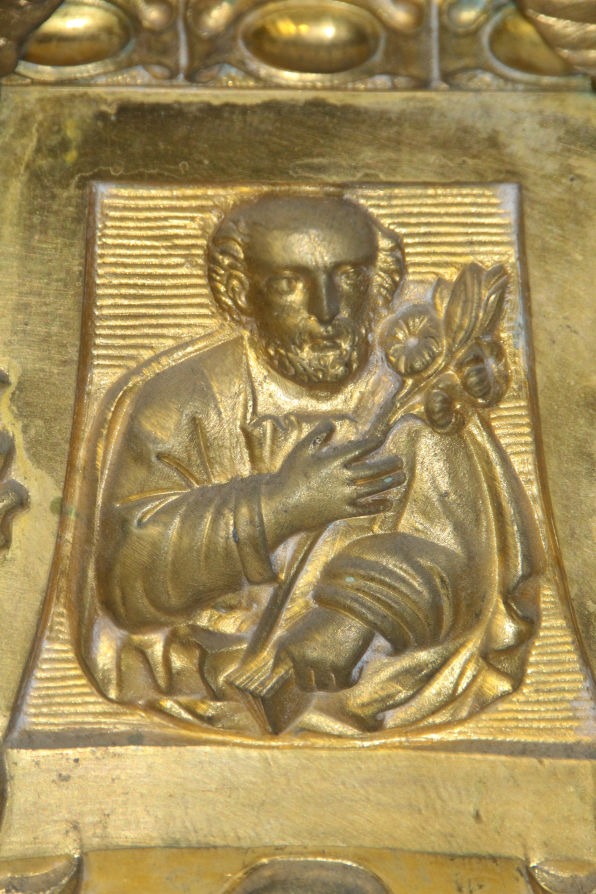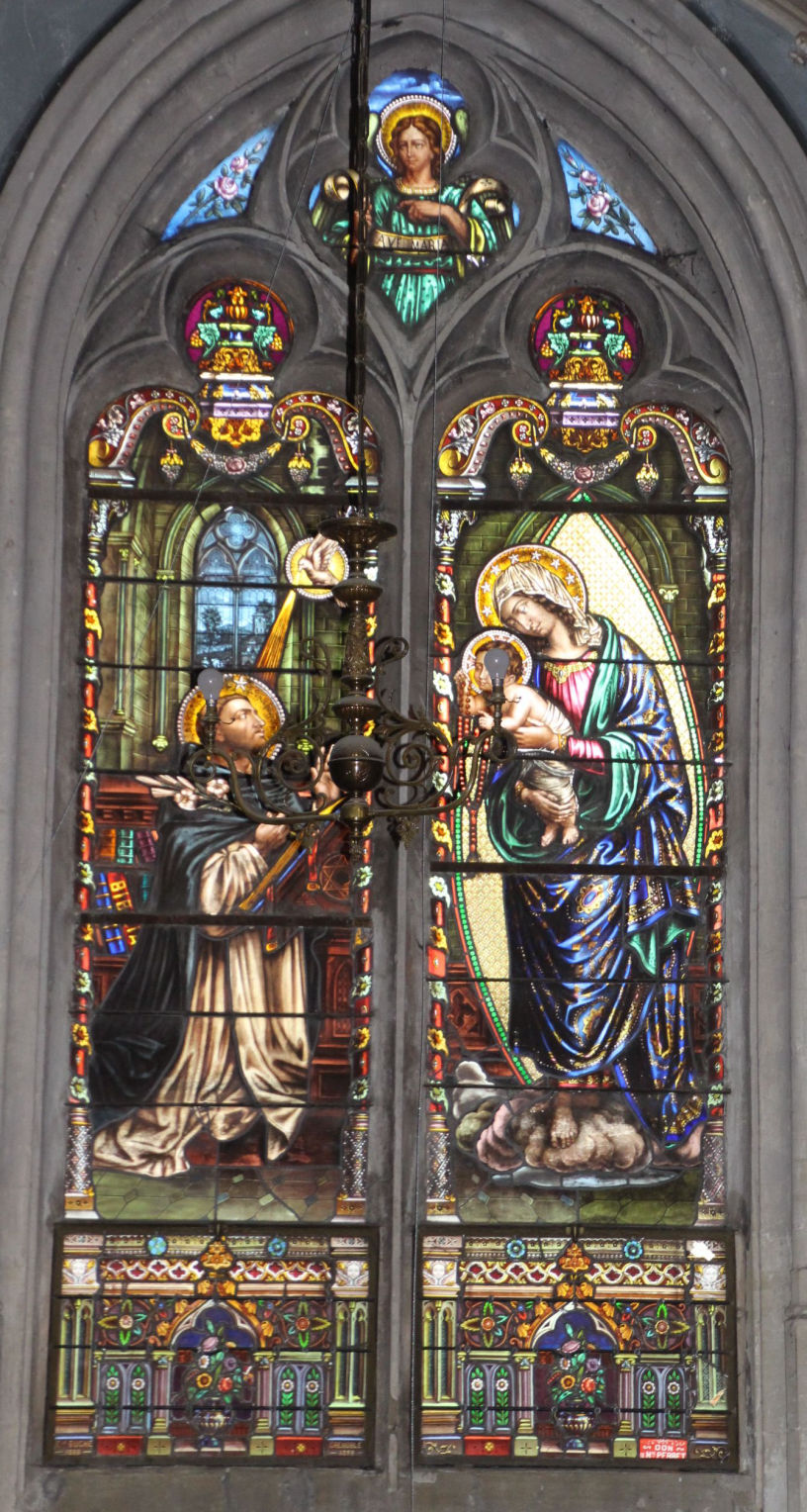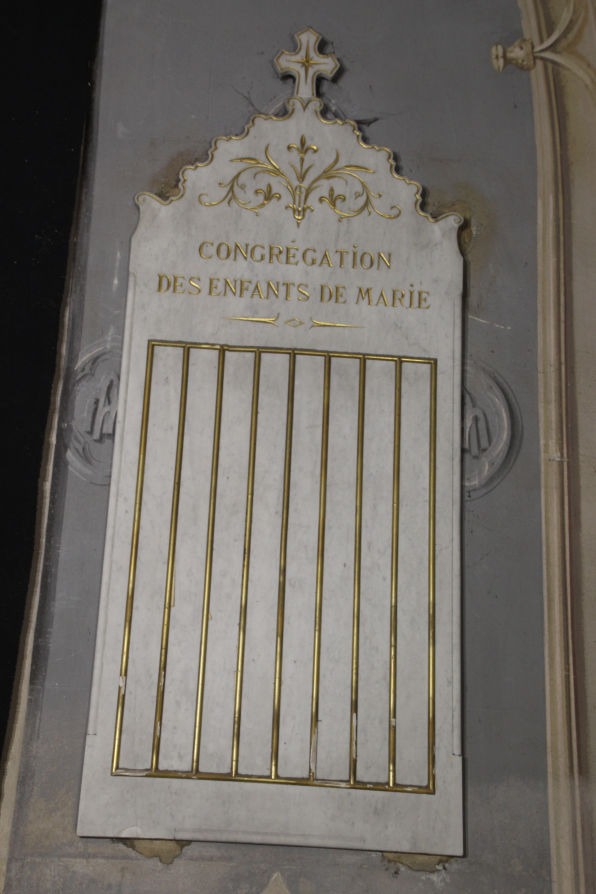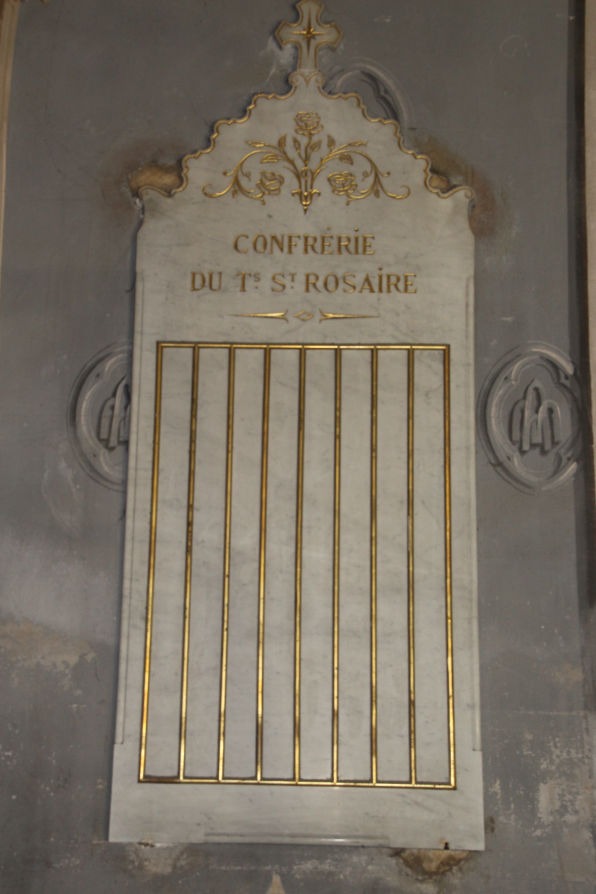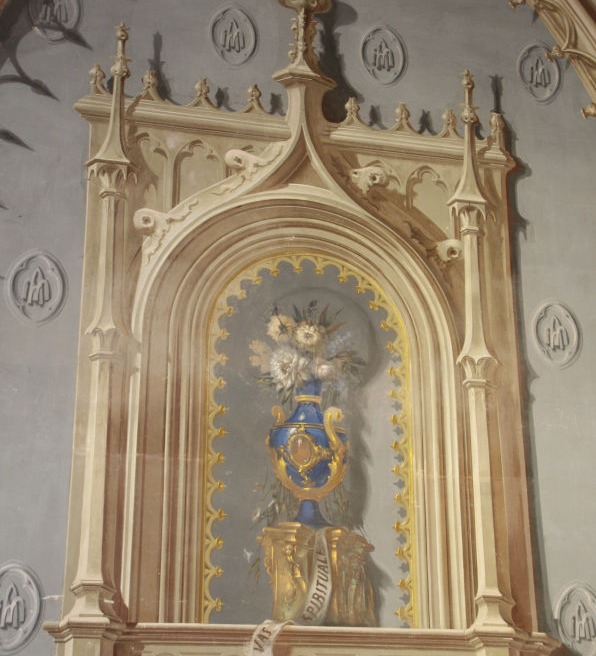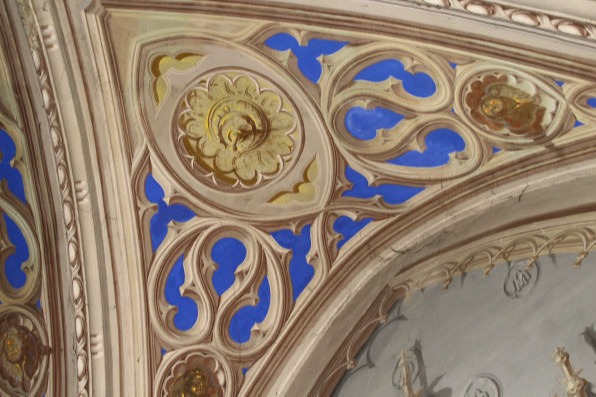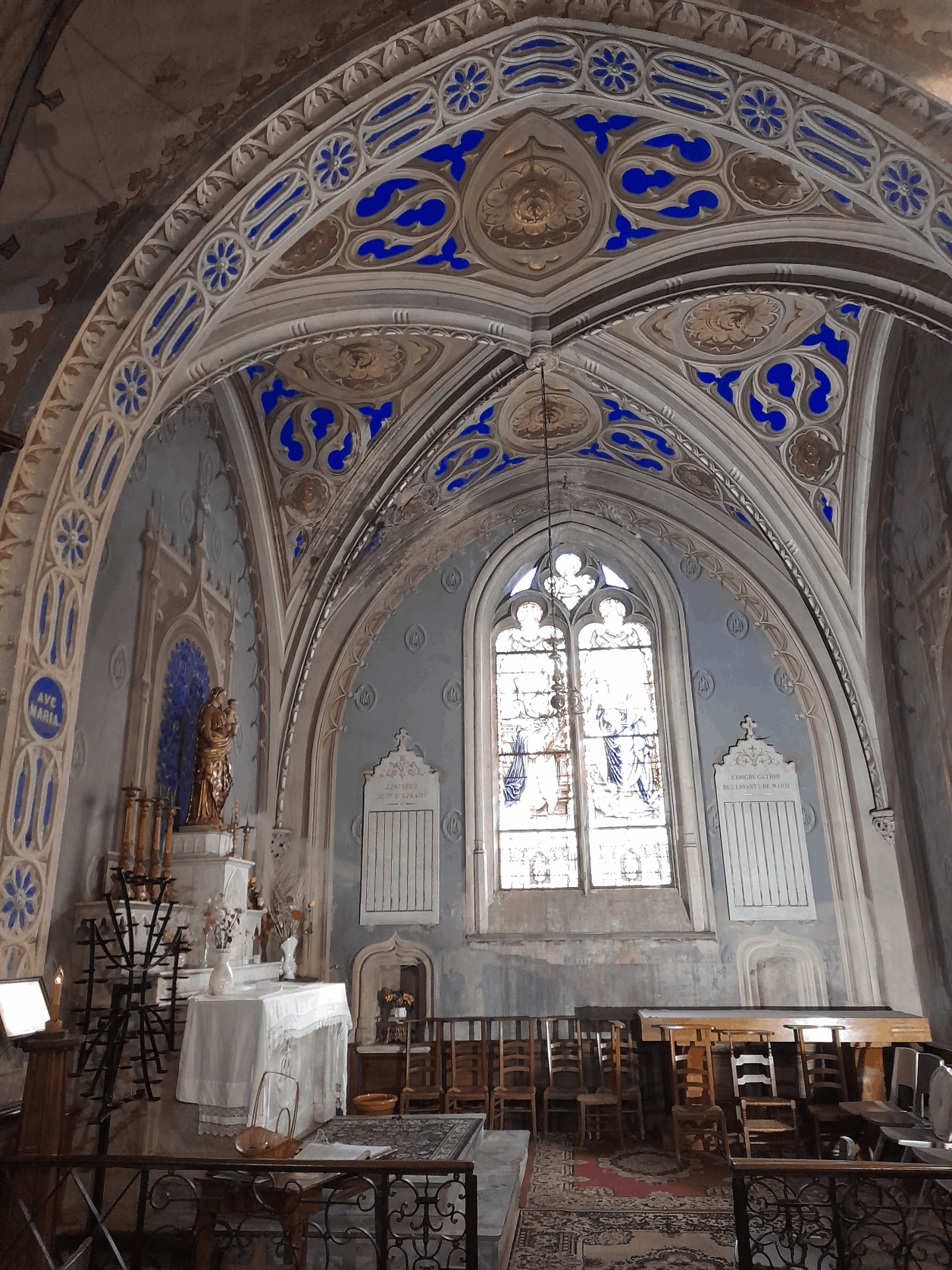
1. The Virgin's Chapel
The Virgin's Chapel
You're now in front of the Chapelle de la Vierge. It was built in the 14th century, during the 100 Years' War, when the Dauphiné region became part of France.
Like the rest of the church, its decorations date from 1866 and are those visible today.
With a width of 6m00 and a depth of 5m45, its vault is 6m80 high. (cf. 1)
The wrought-iron fence, topped by a wooden rail, is embellished with the monogram "AM" for Ave Maria (cf. 2).
The entrance arch, 5.10 m wide and 6.40 m high, features a medallion painted with the inscription Ave Maria on the left pillar and Mater Christi (Mother of Christ) on the right (cf. 3 to 4 below).

